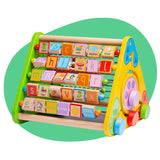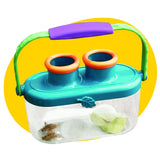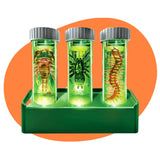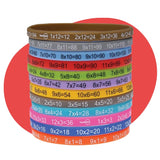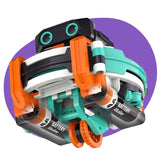Learning about the world around them is exciting for children, especially when it comes to learning about the big wide universe. Encouraging learning about space can help to spark a child’s imagination and curiosity, whilst getting them to join in with active learning which teaches them to be inquisitive and independent.
Teaching your children about the stars and planets can be great fun, but sometimes looking out of the window just isn’t enough for a child. Telescopes for kids have a combination of lenses and mirrors that allow you to look at the night sky up close, so your child can spot the milky way from the comfort of your home.
Getting a telescope for your child is a great way to teach them about stars and planets, but how do you know which telescope is the best one for your family?
Which type of telescope should I choose for my child?
There are different types of telescopes for kids to choose between when picking one for your child. The most common telescopes for children are reflector and refractor telescopes, but which is best for your child?
Firstly there are reflector telescopes. These telescopes use mirrors to reflect light, allowing you to look deeper into space at galaxies, perfect if your child is slightly older. Reflector telescopes are incredibly lightweight, making them ideal for moving around to new vantage points.
Refractor telescopes use a lens to bring images of planets and stars closer to the viewer. Due to the use of a lens, a refractor telescope has cleaner images, making it easier to spot things like craters on the moon or the rings around Saturn, perfect if your child has just started to show an interest in space. Refractors are incredibly sturdy, and they have been designed to last, an ideal addition to your home that won’t be damaged during playtime.
Do I have space for a telescope?
When thinking about purchasing a telescope something that you should consider is how much space it might take up. Most telescopes are quite large and require a certain amount of space to be able to perform perfectly.
If you have limited space for a telescope you should consider a smaller, portable telescope like the Thames and Kosmos My Discovery Telescope. This telescope still offers magnification but is much easier to store out of the way when it’s not being used.
If space isn’t an issue you can wow your children with a telescope that looks just like one a professional might use with the GeoSafari Vega 360. The sleek white telescope is still lightweight but comes with a tripod so your child can set it up in a window and come back each night to see how the sky might have changed.
Portable or handheld telescopes are the ideal solutions to storage space, and they can easily be taken outside for fun, nighttime viewing.
No matter your needs, there is a telescope that is right for your child and your home.
What is the best Children’s telescope?
Picking the perfect telescope for your child can feel like a big decision, which is why we have come up with a few options that we believe are the ideal addition to your at-home star-spotting adventures.
GeoSafari Vega 360 Telescope

At BrightMinds we believe that a refractor telescope like the GeoSafari Vega 360 is the perfect telescope for beginners. The GeoSafari is a powerful telescope that provides excellent night sky views for your child to explore. The portable, lightweight design makes it an excellent telescope for taking outside or packing out of the way for playtime.
Not only is the GeoSafari great for learning about the night sky, but it’s also excellent for looking at wildlife and learning about the world around us. Try observing the different birds that appear outside, or watching the different shaped clouds during the day.
Thames and Kosmos My Discovery Telescope

Thames and Kosmos have delivered an excellent first telescope for children with the My Discovery Telescope. A handheld telescope with a soft shell ocular lens cover for optimum comfort whilst you observe the skies, this telescope is an ideal beginner's scope.
Discover the craters of the moon, or the birds in your garden with 12x magnification power from Thames and Kosmos, or use it to become the perfect pirate, the choice is yours.
Take your telescope out and about to explore the world, from the wonders of the night sky to the excitement of bird watching, there’s no end to what you can discover together.
Build Your Own Telescope

There’s no better way to get children interested in science and space than using crafts with this Build Your Own Telescope. Get stuck in with this cardboard creation that can help your children see up to 16x magnification with a fully functioning refractor telescope!
Not only can your child learn about the wonders of outer space, planets and stars with the help of this telescope, but the building process can teach them how a telescope works, ideal for curious minds. Inspire creativity and curiosity about science.
Learning about the world and the planets is a great way to teach your children to have a greater appreciation for our planet and all that it does for us. Discover stars, planets and the craters of the moon for some fun, at-home learning with BrightMinds.
Discover The World with Telescopes from BrightMinds
At BrightMinds we have a wide range of educational toys and games that help your child to learn about the world around them, as well as about how things work. Encouraging curiosity and creativity is a key part of teaching your children about the wonders of science, which is why we have a selection of toys that make learning fun.
Whether you are looking to encourage some at-home STEM learning, or you are listening to your child’s interests, there is a toy out there that is perfect for you both.
Not sure where to start? Get in touch with our helpful team for more knowledge about each of our products, or check out our FAQs for more information. No matter your query, we’re happy to help.